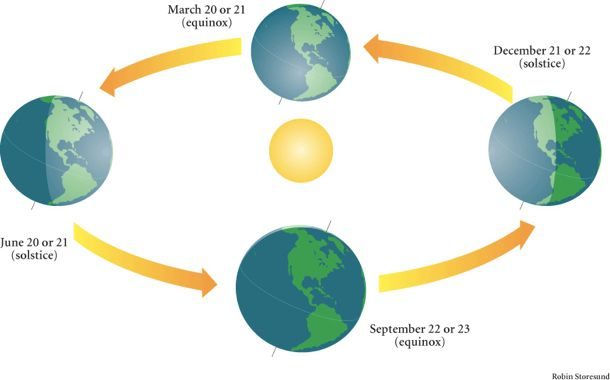
Archived from the original on 18 June 2017.

^ a b "The Long Story (USNO explanation)".^ Équinoxe de printemps entre 1583 et 2999.^ "Solstices and Equinoxes: 2001 to 2100"."Earth's Seasons - Equinoxes, Solstices, Perihelion, and Aphelion". ^ Astronomical Applications Department of USNO.The length of day increases from the equator towards the North Pole in the Northern Hemisphere in June (around the summer solstice there), but decreases towards the South Pole in the Southern Hemisphere at the time of the southern winter solstice. Times that occur the next day (21 June) are marked with +. The data is arranged geographically and within the tables from the longest day to the shortest one. The data was collected from the website of the Finnish Meteorological Institute as well as from certain other websites. The following tables contain information on the length of the day on 20 June 2016, close to the summer solstice of the Northern Hemisphere and winter solstice of the Southern Hemisphere. Length of the day on northern summer solstice Fête de la Musique, also known as World Music Day.Santa Barbara Summer Solstice Parade ( Santa Barbara, California, United States).Fremont Solstice Parade ( Fremont, Seattle, Washington, United States).Day of Private Reflection ( Northern Ireland).National Indigenous Peoples Day ( Canada).In Sweden, midsummer is one of the year's major holidays when the country closes down as much as during Christmas. The summer solstice continues to be seen as the middle of summer in many European cultures, but in some cultures or calendars it is seen as summer's beginning. Traditionally in northern Europe midsummer was reckoned as the night of 23–24 June, with summer beginning on May Day. In Germanic-speaking cultures, the time around the summer solstice is called ' midsummer'. In the Roman Empire, the traditional date of the summer solstice was 24 June. The significance of the summer solstice has varied among cultures, but most recognize the event in some way with holidays, festivals, and rituals around that time with themes of fertility. Many ancient monuments in Europe especially, as well as parts of the Middle East, Asia and the Americas, are aligned with the sunrise or sunset on the summer solstice (see archaeoastronomy). There is evidence that the summer solstice has been culturally important since the Neolithic era. Main article: Midsummer The solstice being celebrated at Stonehenge in England This is because Earth orbits the Sun in an ellipse, and its orbital speed varies slightly during the year. Front right: summer solstice for the Southern Hemisphere.Īlthough the summer solstice is the longest day of the year for that hemisphere, the dates of earliest sunrise and latest sunset vary by a few days. Far left: summer solstice for the Northern Hemisphere. Likewise, the Sun's declination from the celestial equator is 23.44°.ĭiagram of Earth's seasons as seen from the north. On the summer solstice, Earth's maximum axial tilt toward the Sun is 23.44°.

Traditionally, in temperate regions (especially Europe), the summer solstice is seen as the middle of summer and referred to as midsummer although today in some countries and calendars it is seen as the beginning of summer. Since prehistory, the summer solstice has been a significant time of year in many cultures, and has been marked by festivals and rituals. In the Northern Hemisphere, this is the June solstice (20 or 21 June) and in the Southern Hemisphere, this is the December solstice (21 or 22 of December). The summer solstice occurs during the hemisphere's summer. The opposite event is the winter solstice. At either pole there is continuous daylight at the time of its summer solstice. For that hemisphere, the summer solstice is the day with the longest period of daylight and shortest night of the year, when the Sun is at its highest position in the sky. It happens twice yearly, once in each hemisphere ( Northern and Southern). The summer solstice or estival solstice occurs when one of Earth's poles has its maximum tilt toward the Sun. Equinoxes and solstices on Earth eventĮarth during the summer solstice in June 2017


 0 kommentar(er)
0 kommentar(er)
